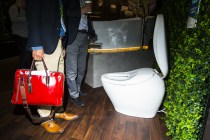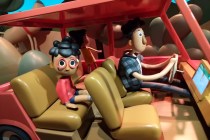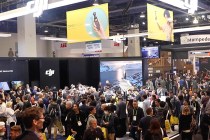If you don’t make time for anything else this weekend, make sure to set aside some time to go outside and catch the lunar eclipse.
Science and Technology
Robots and more robots marked just one trend at CES. Now that the 2019 show has wrapped up until next year, a look at some of the other trends, products that grabbed attention this year.
While there was little doubt among attendees that 5G will revolutionize the world, when that revolution will actually dawn is disputed.
The Golden Knights tested out puck and player tracking technology during games against the New York Rangers and San Jose Sharks this week at T-Mobile Arena.
Las Vegas is reviewing the potential implementation of Blockchain, a database technology in which information is decentralized and communally maintained.
When you purchase a bottle of water, do you think about where it came from? When you turn on the sink faucet, do you expect water to always come out?
A ransomware attack on Atlanta’s computer systems in 2018 was a sobering reminder that the infrastructure local governments must protect is no longer limited to roads, pipes and power grids, experts said Wednesday.
When it comes to smart bathroom appliances, you could say the Sands Expo and Convention Center is flush with them.
CES attendees lined up for as long as half an hour outside Google’s pavilion to see the new voice-activated abilities the Silicon Valley company is launching.
Soon the skies above urban areas could look like a scene straight out of the Jetsons.
CES 2019 in Las Vegas was kind of like the Running of the Bulls, but with the densely packed throng goaded forward by technological devotion in place of pointy horns.
Efelya was created to help pregnant women monitor their potential health risks after co-founder Florine Duplessis battled her own high-risk pregnancy.
Sony’s robot dog Aibo appeared at CES 2019, the second time the canine with artificial intelligence has graced the Las Vegas conference.
A six-month pilot program is aimed at creating a smart lighting network and reducing energy use in downtown Las Vegas.
Fifty-three million American adults own a smart speaker, and the list is growing; the number of smart speakers in U.S. households jumped 78 percent in one year to 118.5 million in December 2018, according to Edison Research.
















